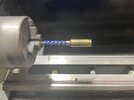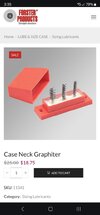AJC1
Member
After reading posts about neck lube, neck tension and their role in accuracy, I see a lot of references to brushing necks of cases. I have this gut feeling that people are doing different things and calling it the same thing. Are we using lube or is this a cleaning process or both.... I don't at all and I just might be missing something big!!!! Please describe exactly what your doing.



